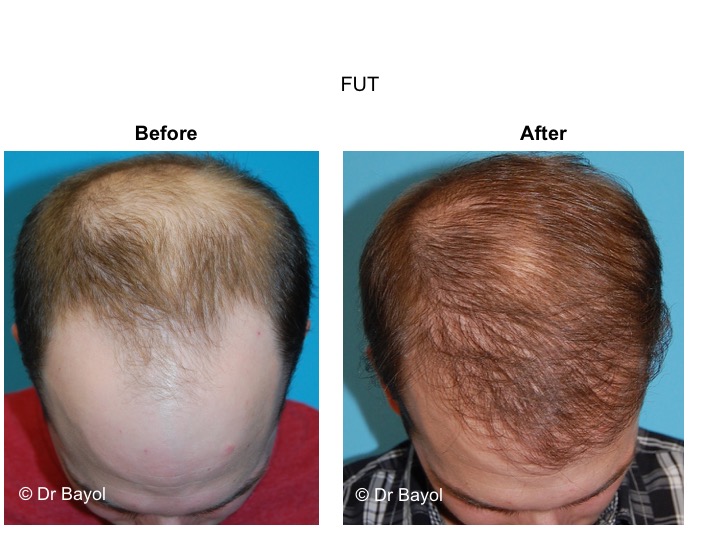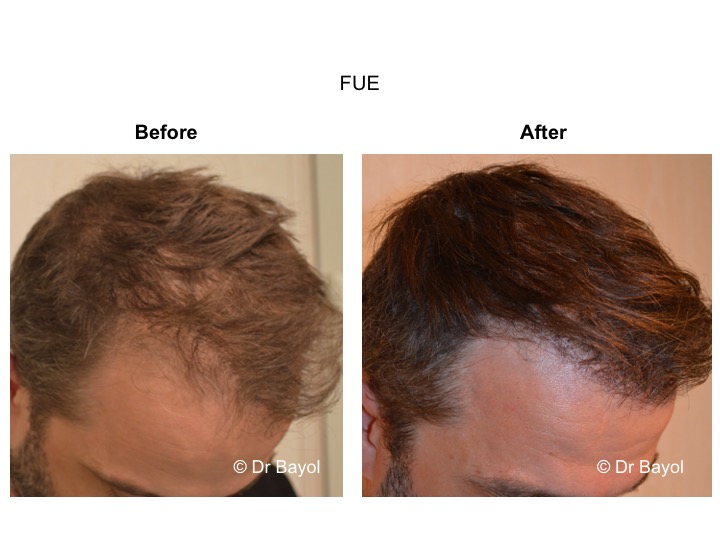GENERAL INFORMATION ON HAIR LOSS
Hair always have symbolized strength, power and seduction. Their progressive disappearance can be more or less fast and is called alopecia. Hair loss leads to an important physical and psychological discomfort especially in women and young men.
Some general information on the hair anatomy and its cycle will allow to better understand the mechanism of the hair loss and the mode of action of the different medical and surgical treatments enabling to fight baldness.
> all about GENERAL INFORMATION ON HAIR <
GENERAL INFORMATION ON HAIR AND HAIR LOSS IN MONTREUX, LAUSANNE AND GENEVA (SWITZERLAND)
The normal hair has about 100,000 hairs. Each hair falls and regrows during a lifetime following a cycle that varies from 2 to 5 years. When we age, the hair tends to become scarce and its regrowth becomes insufficient to compensate its loss.
Alopecia, also known as baldness, corresponds to the accelerated and permanent loss of hair. In most cases, it affects men in certain areas: temples, forehead and upper skull. The hair of the crown, above the ears and above the nape of the neck, is always spared. It can also affect women but does not spare any area in this case.
The main cause of baldness is still poorly understood, it is a local disturbance of hair follicle receptors to androgens and/or a genetic predisposition. It is called androgenic alopecia.
Many external factors can promote hair loss, especially tobacco consumption. Stress, sun, air pollution, some medications and a low iron diet also promote premature hair loss.
Hair loss can have a significant psychological impact, especially in young men and women.
The development and improvement of the technique of hair transplantation in Switzerland, which is still called capillary implant, has revolutionized the cosmetic surgery of baldness. The capillary micro-graft makes it possible to reduce the importance of the procedures and the cicatricial results.
Even it several techniques existed until the beginning of the twenty-first century (scalp flap, tonsure reduction, scalp lift), hair transplant is currently the almost exclusive method. To perform this technique, two sampling possibilities exist:
– Preparation of a strip of hair that is divided in micro-grafts in a second time, it is called Follicular Unit Transplantation (FUT);
– Individual sampling of each micro-grafts also called Follicular Unit Extraction (FUE).
Whatever technique is used, the principle is always the same: to take the hair at the level of the crown of the scalp, where it never falls and place it on the balding areas.
These different techniques can be combined on the same patient. To do so, different elements will be taken into account: the age, the importance of the hair loss, the scalp flexibility, the quality and density of the remaining hair and the expectation of each patient. Based on these parameters, a personalized therapeutic strategy will be planned.




















